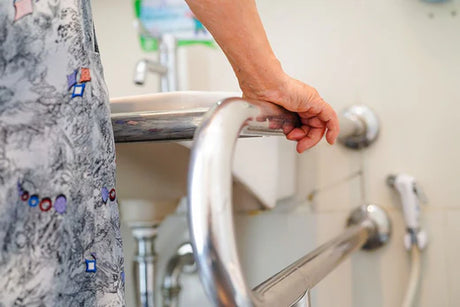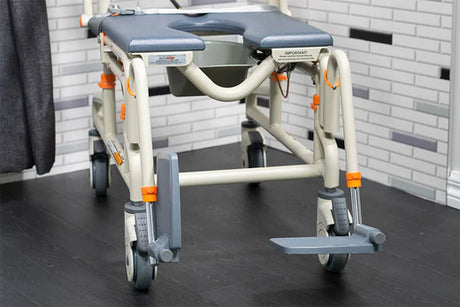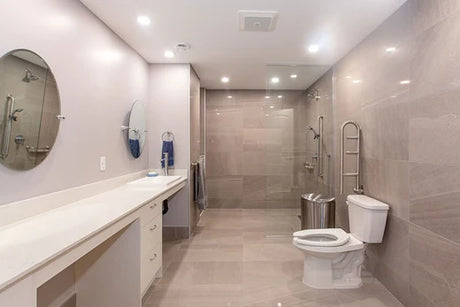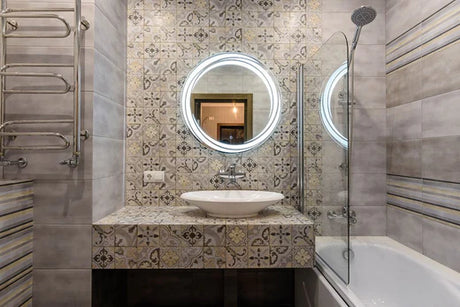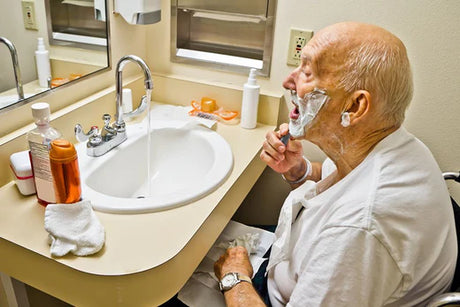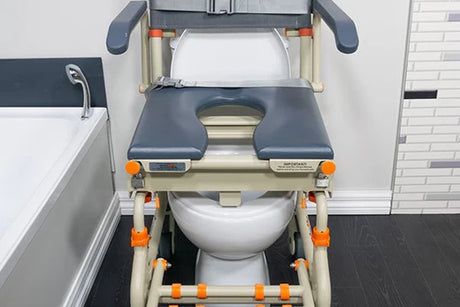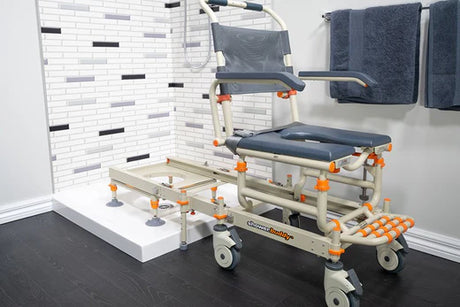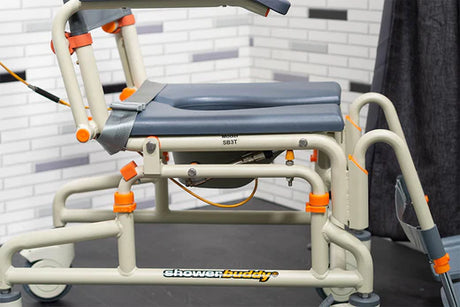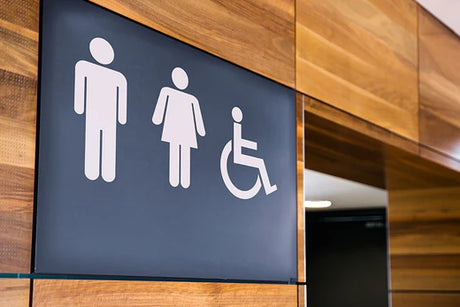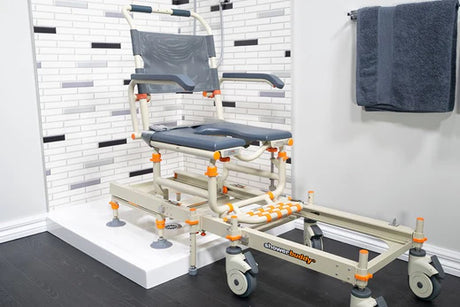If you have mobility impairment in the bathroom that prevents you from enjoying bathing or using the toilet, then we’ve prepared some buying advice for you on your search. After reading, we’d encourage you to browse our range of shower transfer systems too. Or, if you’re still having trouble deciding what shower chair is right for you, get in contact with our team for some advice.
Establish the level of mobility and support needed
Before even shortlisting shower chair options, users need to have a clear assessment of their mobility support needs in the bathroom. Without properly reviewing needs, it’s easy to make an incorrect purchasing decision. An OT or PT will work with the end user to determine current and likely future mobility impairment and support required – which parts of bathroom use require assistance, how a carer factors in vs. equipment and other key considerations relating to the user’s specific condition(s).
Some questions to answer include:
- Can the user manage some bathing tasks themselves?
- Are they comfortable self-propelling in a wheeled chair?
- Do they need help using the toilet as well as bathing?
- What support is needed to transfer the individual onto a chair, toilet or bathtub?
- Would the user benefit from being tilted backwards in a chair, e.g. clearing legs from the side of a bathtub, or enabling easier access for bathing by a carer?
Once a home assessment is done, you will have a much more detailed set of criteria to research chairs with.
Finding shower equipment that fits body type
Always check the specifications and dimensions of shower chairs you’re interested in.
Many of the cheaper, low quality shower chair products do not cater to a variety of body types such as larger adults or children. Make sure you choose a chair that is built for your body type, both in its dimensions and certified weight support. You’ll want to check the height of the backrest, width and depth of the seat, and leg supports. A good chair will provide adjustments to fine tune the chair for your comfort. Going for a budget model from a chain retailer might be attractive from a price point of view, but quickly becomes a waste of money when it’s not fit for purpose. Worse still, a poorly suited shower chair can result in injury if it fails to adequately support you.
Measuring the bathroom properly for a shower chair
The assessment of a user’s needs is one part of the puzzle, but knowing what the bathroom can accommodate is important too. With such a range of different bathroom sizes and layouts, users need to understand if a shower chair will even be usable. And remember, use isn’t confined to showering, but using the toilet, maneuvering the chair around the bathroom and of course, transferring the user onto it.
Making Bathroom Measurement Easier
Measuring up a bathroom is often done by an OT, but can be time consuming and for some complex layouts, quite tricky. We identified this issue, combined with the restrictions around travel, and developed a solution called BathCheck – a web-based app that guides you through a bathroom measurement process to provide you with tailored product recommendations. Learn more about BathCheck now.

Ease of transfer into and out of the shower
As you browse shower chair options, you need to keep this consideration at the front of your mind – how well supported is transferring into and out of this chair? While comfort during use is important, transferring is the time where there is significant weight distribution moving in an often slippery environment. A carer’s biggest challenge can be safely moving the user to perform each bathroom task.
Getting into a shower, especially one that’s in a bathtub, requires edge clearance and several moments where the user is unstable. Rather than cope with the risks of a shower transfer, Showerbuddy developed the shower transfer system with a bridge and base that moves the user into the shower without getting out of the chair once.
Customisability and accessories
Everyone’s needs are slightly different. Find a shower chair that offers functionality to adjust settings, height, positioning that allows the chair to work around you not the other way around.
Many shower chairs are simply the unit and nothing else. Ideally, you’ll want the option of accessories to further customise your chair to your comfort and mobility needs. If a user is taller, they may need additional components to extend the height of the chair’s backrest. Check to see if the accessories are readily available, too.
The last thing a user wants is to cope with a semi-functional shower chair for months until the right part arrives.
Check for this functionality when you’re researching different shower chairs:
- Swing away arms
- Foot rest adjustment
- Chair height extension
- Neck support option
- Different seat cushion styles
Mobility impairments aren’t the same over the long period. Even a user who’ll require lifelong support in the bathroom will grow and develop. We’d recommend choosing a chair that can evolve with the individual over time, reducing the amount of times an entirely new chair is required. A child may be able to bring their chair into young adulthood if they choose a product that’s designed to do this with the help of adjustments and accessories.
Considering Showerbuddy for your bathroom mobility needs? Explore the range of Showerbuddy accessories.
Durability and design of the chair
A shower chair may be with a user for an extended period of time – perhaps forever depending on the disability. Even if it’s just for rehabilitation from an injury, a shower chair needs to be built well. A low cost chair will likely compromise in two critical areas – design and materials – both of which hamper longevity. Low grade plastics and fixtures in a wet environment will loosen, crack and erode over time, leaving them dangerous to use.
Instead, shop around for chairs made from high grade aluminium, stainless steel and PVC. Specifications should detail the types of material, e.g:
- No rust Aluminum frame (Grade 6061 T6)
- Stainless steel parts and hardware (Grade 304)
6061 is a precipitation-hardened alloy, made for exceptional corrosion resistance. Our Showerbuddy team design and sourced materials all with the long term bathroom mobility user in mind.

Regarding design, take some time to review products closely – watch videos, images and even 360-degree renders if possible. You’ll be wanting to look for design factors like:
- Where the brakes are positioned
- The quality of the welding
- The way component such as the seat are fixed to the chair frame
- Ease of adjustment of back/arm/feet rests
- Wheel size and ease of rotation
- Sturdiness of handles, levers and fixtures like nuts and bolts
- Ease of setup and installation
- How the design accommodates a carer
If you’re unsure about any of this, reach out to the manufacturer for more information. It’s important to have all the facts before you make a decision.
Installation requirements for a mobility solution
We’ve talked about measuring up your bathroom, but some units have specific installation needs. This can mean drilling into the wall to fix grab bars or other supports that make up the bathing solution. If you’re renting or not keen on permanent modifications, you will want to choose a shower chair that allows installation as a standalone unit and non-destructive fixtures (like a base with suction feet).
Read through the installation and product manual for shower chairs on your shortlist – here you’ll determine what sort of set up is in store, and whether that makes it a fit for you.
Travelling
If a user travels or wants the ability to take a shower chair with them when they move, then the shower chair needs to provide a degree of simplicity with setting it up or packing it down. Being able to bring a familiar shower chair while travelling helps the user maintain comfort while out of the home. Check the specifications for the weight of the chair and its dimensions when packed down, so you know it’s practical to transport if needed.

Warranty and support
A shower chair for mobility impairments is a medical device – not simply an impulse purchase for convenience. When purchasing a chair, prioritise benefits like extended warranties and do your homework on the company behind the product. What support do you have if you need help during ownership? Knowing that there’s a team to provide carer, OT, family and user with help can provide peace of mind and an improved experience.
Choose a product backed by years of research and expertise
Showerbuddy’s range of shower chairs tick all the boxes we’ve discussed today. Designed by a team in New Zealand, the Showerbuddy chairs are enjoyed by mobility impaired users globally. We build our units to exacting standards, use high grade materials, and a design that removes the need for any bathroom remodelling.
Further reading
- Interested in Showerbuddy? Find where to buy near you.
- Showerbuddy product range of shower chairs.
- Measure Your Bathroom with BathCheck






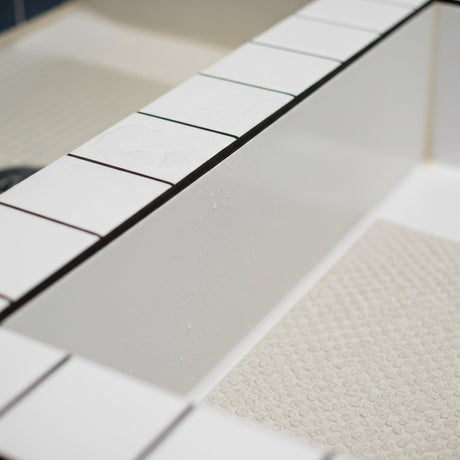

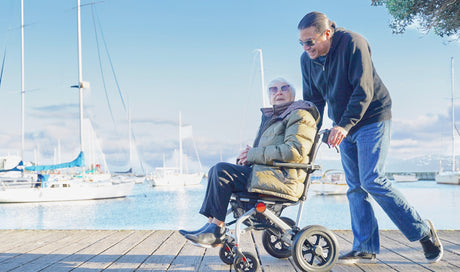
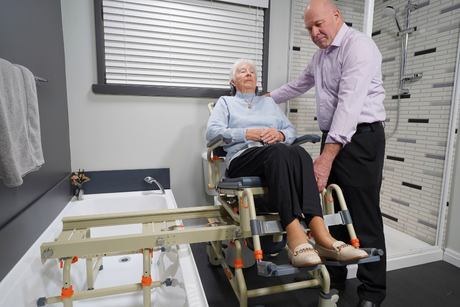
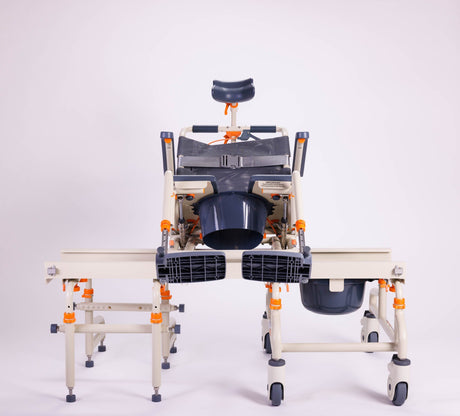

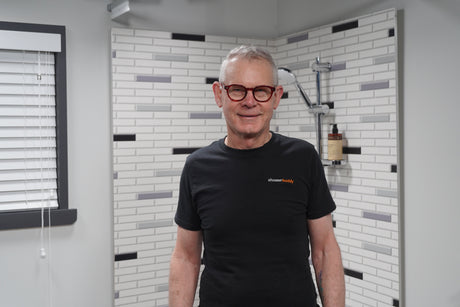
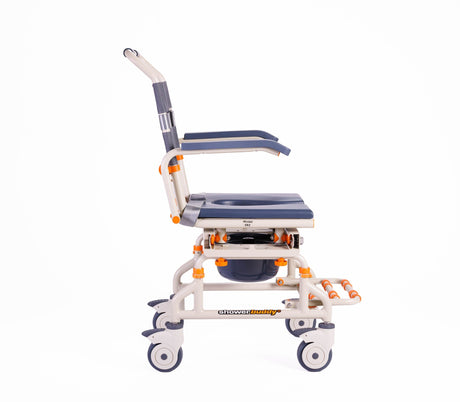
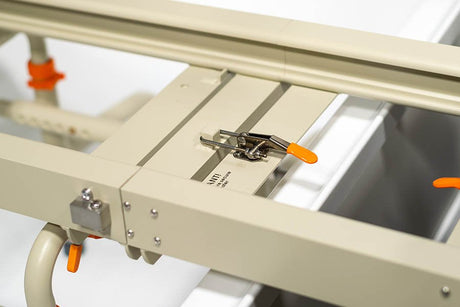

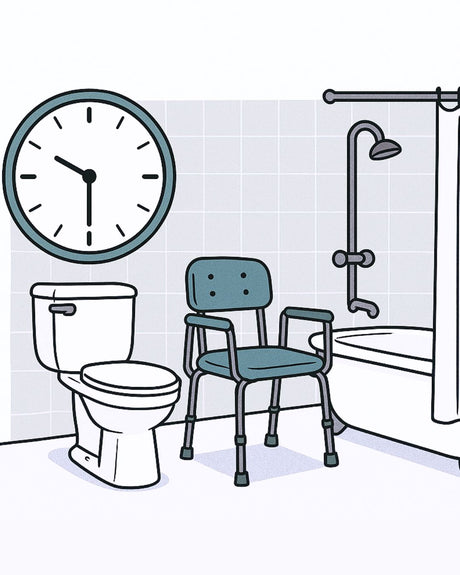
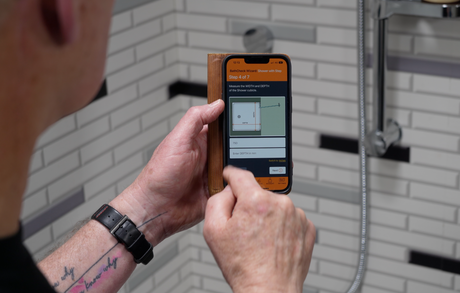
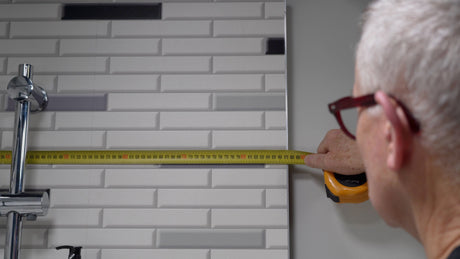



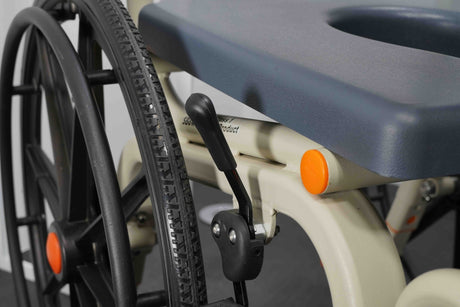



![Toilet Training A Young Child With Mobility Challenges [And How A Shower Chair Can Help]](http://shower-buddy.com/cdn/shop/articles/toilet-training-disabled-child_520x500_a90e5234-d372-435d-aa56-8da15dd3836c.webp?v=1722557239&width=460)



